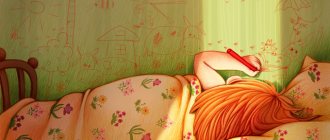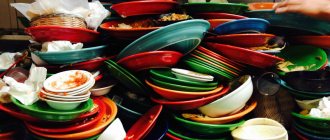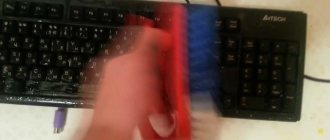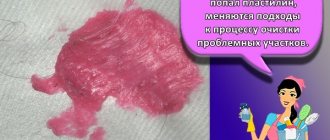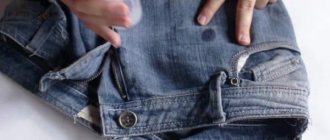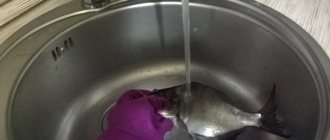Liquid decorative coating appeared on the shelves of construction stores relatively recently. Those who took the risk of decorating their walls with it managed to convince themselves that the performance characteristics of the material are really good and the appearance is attractive. Over time, the familiar interior becomes boring and loses its presentability. It's time to change it. Let's figure out how to remove liquid wallpaper easily and quickly.
What is liquid wallpaper
Before you start repairing and pick up tools, you need to find out what the unusual material is. This is a multicomponent mixture, the composition of which can vary significantly. In any case, three ingredients are required:
- Natural fiber base. It can be cellulose, serf or silk.
- Binder in the form of glue. Most often, one of the varieties of traditional CMC based on modified starch is used, sometimes more effective PVA is added.
- Dye. Any water-based acrylic pigment.
To give it a spectacular look, filler is added to the composition. A variety of materials are chosen: thin stone or plastic chips, glitter, mica, threads, etc. The appearance, properties and cost of finishing depend on what was added to it. The mixture is diluted with water and applied to the base as a paste. After drying, it hardens and becomes quite resistant to scratches, impacts, etc. Sometimes this is not enough, then the finish is additionally coated with varnish or paint.
The number of layers is determined by the owner. The more there are, the stronger the monolithic coating is. It is clear that it does not acquire the same properties as, for example, plaster, but resistance to various mechanical damage increases significantly.
Reasons for withdrawal
The need to get rid of such cladding may arise for various reasons. First of all, you may need to update the interior of the room. Then the old coating is first removed and only then the area is covered with new material. Also, a serious defect could appear on the surface of the wall. If it cannot be eliminated in such a way as to preserve the liquid wallpaper, then the entire coating will have to be removed.
The listed reasons are the main ones for removing any wall covering. It is important to take into account the specifics of removing the finish so that the process is successful and without problems.
It is worth understanding that it will not be possible to remove the canvas easily in a few minutes. Liquid wallpaper is somewhat more difficult to clean than the usual paper version. Therefore, you need to prepare for the fact that you will have to spend some time before getting the desired result.
When dismantled, liquid wallpaper begins to crumble. This provokes the appearance of stains on the wall and small debris. Therefore, it is recommended to use personal protective equipment.
How to remove liquid wallpaper from walls yourself
There are several options for cleaning walls from such coating.
Their use depends on how the coating was applied and on the quality of the material itself.
Therefore, even when applying it, you should take into account that someday you will have to remove all this in order to make the next repair, and have a clear idea of how much effort this may cost.
Why is it better not to glue new wallpaper onto old ones?
In the old days, when wallpaper was entirely paper without any protective films or coatings, gluing new wallpaper onto an old, smooth, undeformed, but simply boring, coating could be done with a clear conscience. Sometimes there are so many layers of old wallpaper that from them, like tree rings, you can determine the number of repairs and remember different periods in the life of the owners. If you are going to glue paper wallpaper over old Soviet paper wallpaper that miraculously survived, then you can take a risk and do without the dismantling procedure. In all other cases, it is better not to do this.
Firstly, if you plan to decorate the walls with plaster, photo wallpaper, paint or any other finish, then the layer of old wallpaper must be removed without fail. Secondly, even if you are going to glue wallpaper again, then when applying one layer to another you can get lags in the new layer, wrinkles, bubbles and other defects. This happens because the old layer may no longer hold on very well, and there is also an increased load. Moreover, the glue you will use will soften the old layer of wallpaper. As a result, the drying process will be delayed, and if the wallpaper in two layers is of different quality, then the lag from the walls cannot be avoided.
- It’s great if you still have labels from the rolls that indicate the type of dismantling, for example, “remove wet” or “delaminate when removed.”
- Before you start removing old wallpaper, remember how it was applied. If it was ordinary wallpaper glue that was applied to primed walls, then most likely the entire dismantling process will not be very difficult.
- Problems may arise if the wallpaper was glued with non-standard glue, such as PVA, or was mounted on an unsuitable surface. The most difficult surface is considered to be unputtyed drywall.
- Some difficulties may arise if the top layer does not absorb moisture (vinyl and washable wallpaper), but effective methods have been invented for this case.
In any case, remember that nothing is impossible. There are many ways to remove old wallpaper from walls; you just may have to put in a little more effort than planned.
Preparing the premises for rent
Before starting work, as always, you need to prepare:
- bring the premises into a condition appropriate for the type of work;
- purchase the necessary materials;
- prepare a set of tools and devices.
The amount of work to prepare the room for removing liquid wallpaper is determined by just one factor: the owners did something stupid and covered the walls covered with liquid wallpaper with varnish or paint, or not. If you have time to paint, you will have to work with a sander or grinder with a special attachment; no, just water and a spatula are enough. Therefore, the preparation of the premises is different.
Mechanized wallpaper removal. With this method there is a lot of tiny dust, and a lot is putting it mildly. Everyone knows about its ability to penetrate anywhere and everywhere. It even penetrates under plastic film in some incredible way. Therefore, if there is no desire to also clean and launder the furniture after renovation, everything is removed from the room. And then the standard:
- the room is de-energized;
- switches, sockets and lighting fixtures are removed: chandeliers, sconces, lamps, etc. (practice shows that it is faster and easier to remove than to cover with plastic wrap and then wash);
- baseboards and baguettes are dismantled (most experts recommend sealing them with tape or masking tape, but do not explain how to keep the baseboard (baguette) intact when working closely with a power tool);
- remove decorative strips from doors;
- cover the floor with plastic film;
- cover the door and window openings with film, gluing it to the wall with tape.
Manual method. In this case, everything is much simpler:
- the furniture is moved to the center of the room and covered with plastic film;
- the room is de-energized;
- sockets and switches are removed;
- lighting fixtures are covered with film;
- Old newspapers or packaging cardboard are spread on the floor.
Preparatory work
Before starting the process of removing the finish from the walls and ceiling, it is necessary to carry out a certain amount of work. It is worth noting that removing wallpaper is accompanied by a large amount of debris and dust, so the room needs to be prepared properly.
Let's start the preparatory stage:
- All furniture must be removed from the room being renovated. Bulky items that are difficult to transport must be wrapped in film or paper;
- doors should be protected using polyethylene. It is recommended to dismantle the platbands. This material is also used to protect flooring;
- Frames are removed from all sockets and switches. Next, use masking tape to close them. Scotch tape is also useful for attaching the film;
- windows and window sill should be wrapped with thick film;
- It is recommended to cover all lamps with oilcloth and secure it with tape.
Preparing screens for removing finishing
Depending on the density and thickness of the layer, a special solution is prepared, which can significantly reduce working time. The easiest way is to wet the wallpaper with warm water and pick it up a little before removing it. A more effective way is to mix warm water with household chemicals.
In finishing materials stores you can find special compounds designed for removing liquid wallpaper.
You can also use improvised means. For example, add a little shower gel, liquid soap, shampoo or dish soap to the water. It is worth noting that this solution is completely safe for health. It can be used in a home where pets or children live. In interior spaces, users who have experience in removing liquid wallpaper recommend using the following composition: 2 tablespoons of vinegar, as well as 2 tablespoons of conditioner (hair product) are diluted in 5 liters of water. Afterwards the solution is applied to the wallpaper.
We recommend: Do-it-yourself vases for the garden made of cement and fabric: how to make a model for flowers in the shape of “palms” from concrete and towels?
Tips and tricks
In a difficult matter, you will need expert advice. After studying them, you will feel more confident in your abilities. Many recommendations will insure you against mistakes that will add more work to you in the future.
Tips for the preparatory stage:
- Try to use professional tools. Despite the many available tools, equipment from a hardware store will make the work more enjoyable.
- Before you begin, be sure to remove all possible furniture and move the bulky set to the middle of the room. Remove all textiles, especially curtains and curtains.
- The floor must be protected from dust, wet plaster and wallpaper using a thick film. Secure the edges to the baseboards using masking tape. Be careful when applying water, the surface of the film will begin to slip.
- De-energize the room. Liquids can leak into outlets and cause a short circuit. Also cover the sockets and switches themselves with tape so that nothing gets in there.
- Before the main work, remove coverings near sockets. Loosen the screws and remove the covers. After this, tighten the fasteners again. It is better to remove various lamps from the walls until the walls are completely dry.
- Think over the entire list of necessary equipment. Bring tools into the premises before starting work. This way you can avoid distractions and won’t spread dirt throughout your apartment.
Now you are ready to carry out a sensitive operation and excitement comes over you again.
In this case, experienced specialists have a few more useful tips:
- If the walls are made of plasterboard and the wallpaper is glued to PVA, then you are in a dire situation. The coating itself cannot be removed. The sheets of drywall themselves require replacement.
- In apartments from the 50s and 60s you can find interesting greetings from the past. The thin walls of such apartments are often covered with several layers of wallpaper. If you are doing a quick cosmetic renovation, then remove one layer of wall covering.
- Don't overuse water. Yes, the wallpaper needs to be softened thoroughly, but too much will only harm you. The liquid can ruin the plaster layer. In this case, the repair will be delayed.
- In rare cases, you can deal with paper wallpaper using a solvent and sanding sheets of different abrasiveness. This option is relevant for thin wallpaper that simply cannot be removed.
- Thin fragments of wallpaper that did not respond to the chosen method can be removed using a drill. You will need a brush with bristles. Place it on the drill and carefully sand the concrete wall. As a result, unevenness may remain; they can be masked with acrylic putty.
Tools
It will not be possible to clean the surface quickly and efficiently if you don’t have a good and reliable tool at hand. To remove liquid plaster from walls manually you will need:
- wallpaper tiger;
- putty knife;
- a bucket for diluting the solution, a roller or sponge;
- empty bucket for the removed coating.
If the surface was removed using clean water, the liquid mass can be reused. There should be no plaster or debris left in the mixture. To store it, you need to dry it properly and leave it until the next repair, or put the raw mixture in a bag and seal it tightly. It can be stored for no more than 2 weeks. During this time, you can renovate another room.
Liquid wallpaper can also be removed using electrical equipment. Used: irons, steam generators, industrial hair dryers, grinders.
Required tools and materials
To remove the coating from the wall, you need to acquire the following tools:
- a set of metal spatulas;
- knife;
- wide brush (maclovica);
- an aqueous solution of special products;
- construction hair dryer;
- Grinder;
- masking tape.
Softening liquid wallpaper using water and special products
If the coating remains in its original state during operation, without additionally being exposed with water-based paint or varnish to acquire water-resistant properties, then removing liquid wallpaper from the wall will be much easier using ordinary warm water, to which one of the following special ones should be added for greater efficiency funds:
- Dishwashing liquid, for example, Fairy or something similar, including liquid soap. Add 50 ml of product to 1 liter of water.
- Special compounds that are sold in construction stores. They are used not only when removing liquid wallpaper, but also when removing other types of wallpaper - vinyl, paper and others. The positive side of liquids is that they do not contain components harmful to human health, have no odor, quickly begin to act and are easy to use.
- You can even prepare a liquid like Henkel Metylan yourself at home. For this purpose, you need 5 liters of water, to which you should add 2 tbsp. spoons of vinegar and a similar amount of conditioner used when washing clothes.
- Some experts recommend using wallpaper glue. It is added to special liquids that are intended for removing wallpaper until the product acquires a jelly-like state.
In addition to them, there are other solutions, but from among those listed, everyone will be able to choose the option that suits them.
If liquid wallpaper contains viscose, then it is reusable and in this case it will be possible to re-paste the desired surfaces with it. In such a situation, it is enough to dry them and pack them in plastic bags, in which the material can be stored freely until used.
Thanks to its reusability, liquid wallpaper can be applied on the same wall, in the country house, in the garage or in almost any other room that needs finishing, by mixing the previously removed and dried coating using technology.
If, upon repeated gluing, the material does not adhere well enough to the surface, this indicates that during the previous times of removal, a significant part of the adhesive substance was washed away with water. To eliminate this drawback, you just need to add wallpaper glue to the prepared batch.
Liquid wallpaper opened with water-based paint or varnish cannot be removed from the wall using water, since it will not be able to soften the structure of the material, not being able to penetrate the protective film present on its surface. In such a situation, deletion will need to be performed using one of the other methods.
Spatula
If an additional layer of paint is not applied to the cladding, it can be removed from the walls with a spatula. This is done like this:
- After thoroughly preparing the room, prepare a homemade mixture or use a store-bought one.
- Next, the surface of the walls is soaked with this solution using a large sponge cloth or a soft roller.
- Pass with a brush or small sponge dipped in solution over inaccessible spaces and corners.
- When half an hour has passed, everything done above is repeated.
- The algorithm is repeated again until the material turns into a kind of paste state.
- When the wallpaper is completely wet, remove it with a spatula.
- In the place where the putty knife cannot remove the material, the wall is re-wetted and cleaned again.
If an additional layer of paint is not applied to the cladding, it can be removed from the walls with a spatula.
Coated
Instructions for removing liquid wallpaper with varnish or paint applied to it:
- Plug in the grinder. If the room is without power, use an extension cord. It must be protected with plugs from dust getting inside.
- Press the working attachment against the wall. It is recommended to start the process of removing wallpaper from the ceiling towards the floor.
- They systematically work on the wall in small sections.
- You cannot leave the device turned on for more than 30 minutes. It will overheat and may burn out. The break from work must be at least 15 minutes. This will allow the sander to cool completely.
Recommended: Essential knowledge about mosquito nets
You need to prepare in advance for the fact that the work will be long and labor-intensive. It will take at least 12 hours to clean 15 square meters.
Using a special solution
Stores sell special liquids for easily washing off decorative coatings. Methylane is an excellent product, recommended on the market, it quickly softens the structure of the material, turning it into a foamy mass. To clean the walls from the product, you need to moisten the coating with a brush. Pay special attention to corners and hard-to-reach places. After 20 minutes, you can remove the material manually.
To remove wallpaper, detergents are used (shampoo, soap, diluted washing powder).
An excellent composition is a solution prepared at home: 4 liters of water and 1 piece of laundry soap. Grate the soap, add to water and simmer until boiling.
Grinding machine
The method using a sander is used when the liquid wallpaper is painted on top with varnish or paint. The process itself goes as follows:
- Protective equipment (respirator, goggles, gloves) is put on the face and hands.
- “Liquid silk” is cleaned off with a grinding machine. In this case, the tool must be applied well directly to the wall.
- Every half hour there is a break of 10 minutes to cool down the machine and rest. It is worth knowing that for every 10 square meters it can take up to 12 hours of working time.
- Next, the garbage is removed.
The method using a sander is used when the liquid wallpaper is painted on top with varnish or paint.
Without cover
Uncoated wallpaper is removed using liquid solutions. Any of them is used according to a single scheme, the difference is only in the exposure time of the composition on the wall.
Instructions for use:
pour the selected product into a suitable container;
- using a metal spatula, notches are made on the wall - this is necessary so that the solution penetrates deeper into the surface of the coating and acts more effectively;
- soak a roller or large sponge with a cleaning agent;
- treat the wall and leave for the time indicated in the instructions;
- pick up the softened wallpaper with a spatula and remove it; if it doesn’t come off well, then apply the liquid composition again and leave it for a while, after which the cleaning attempt is repeated again.
Exposure time of different compositions on the wall surface:
- Soap solution - at least half an hour. It can be prepared on the basis of laundry soap (1 bar grated into shavings and 4 liters of water) or on the basis of dishwashing liquid (10 liters of water and 600 ml of liquid detergent).
- Vinegar 9% – 15 minutes. It is pre-diluted with water in a ratio of 1:8.
- Purchased products, for example, Metylan Moment - 5-10 minutes. The average price of the liquid composition is 550 rubles per 500 ml. This volume is enough to process 40 m2 of wall. The order can be placed online.
If there are areas on the wall that are particularly difficult to clean, use a hairdryer. They heat the surface of the liquid wallpaper until it begins to peel off.
You can quickly and effortlessly remove wallpaper from the wall with a steam generator. If it is not there, use a regular iron. Procedure:
- the device is plugged in and heated to maximum temperature;
- if an iron without a steam function is used, apply a damp cloth to the wall and iron it several times;
- remove the rag;
- remove the coating with a spatula.
Ordinary liquid wallpaper without coating can be removed in this way in 2 minutes.
Industrial hair dryer
An industrial hair dryer is used when work is done manually using a spatula. This algorithm is given above. A hairdryer is needed to easily remove wallpaper from difficult places. They are simply warmed up and cleaned with hand tools.
An industrial hair dryer is used when work is done manually using a spatula.
Steam generator
It’s easy to peel off using a steam generator at home. The process is carried out similarly to the action of an industrial hair dryer, only the surface is treated with steam. The product moves away from the wall without any physical effort.
Using a steam generator
To significantly speed up the process of removing wallpaper of the above type, the finishing material can be pre-softened using a steam generator. Hot steam will make the raw material more loose and pliable. Use extreme caution when using this device.
Before starting work, it is recommended to turn off the power to the room so as not to receive an electric shock from a wet wall.
How to remove liquid wallpaper from walls: options
Over time, any interior wears out, goes out of fashion, or gets boring, then the owners think about repairs. Anyone who likes to do everything on their own does not invite a team of workers, but acts like this: prepares the floors and ceilings, and only then refinishes the apartment or room.
If everything is more or less clear with floors and ceilings, then with walls, when they are not covered with paper, there are problems. One of the unusual finishing materials that unprepared owners have to deal with is liquid plaster. Before removing liquid wallpaper, you need to remember whether it was treated with varnish or paint after application. The method of removal will depend on this.
You can remove liquid wallpaper from the wall manually or mechanically. Without a layer of varnish, they are removed manually: with PVA glue, with an iron with or without a steamer.
You can remove cellulose plaster using PVA glue as follows:
- Prepare the room for renovation (take out furniture, dismantle sockets and switches, cover the floor with film).
- Make a solution.
- You can go over the wallpaper with a sharp object and scratch it with a knife or the corner of a spatula.
- Apply the mixture to the wall with a sponge or fur roller (apply in the corners with a brush) and leave it for twenty to twenty-five minutes.
- Repeat after twenty to twenty-five minutes. If the liquid wallpaper does not come off after the second application of glue to it, repeat again. This is done until the plaster takes on the appearance of a paste.
- The resulting mush is removed from the walls with a spatula.
- Places where the trellises do not get wet need to be additionally moistened and then heated with a regular hairdryer.
You can remove liquid wallpaper from the wall using an iron as follows:
- heat the iron to maximum temperature;
- moisten and wring out the cotton cloth well;
- Apply the dampened cloth to the wall with wallpaper and iron it several times.
The process of removing liquid plaster with an iron is labor-intensive and requires a lot of effort and time.
Note!
Liquid plaster coated with varnish or paint is removed using a drill or grinder.
They do this in the following sequence:
- Prepare the room for renovation (take out furniture, remove sockets and switches, cover the floor with film).
- Dress in clothes that you don’t mind getting dirty, protect your eyes with goggles, and your respiratory system with a respirator.
- Remove liquid wallpaper from the wall without soaking, gradually, taking breaks in work every thirty to forty minutes. This is necessary for cooling the tools and resting the worker.
Preparing the premises
Any repair means noise and dirt. If nothing can be done about the noise, then you can and should protect yourself from dirt, so the room in which the liquid plaster will be removed is specially prepared.
Preparatory work includes the following:
- The furniture is either taken out or covered with film and placed in the center of the room.
- Doors and windows with window sills are protected with film, securing the covering material around the perimeter with masking tape. If possible, it is better to remove the door and trim.
- The floor and baseboards are covered with polyethylene if the baseboards are not dismantled.
- Remove chandeliers, sconces, sockets, switches and frames.
You need to protect yourself too. You will need a respirator, goggles and gloves.
To prepare the walls, special tools may be required:
- spatulas;
- rollers, sponges, brushes, rags;
- knife;
- hair dryer (household or construction);
- iron;
- grinder;
- water, spray bottle.
Removal with a spatula
You can only remove wallpaper with a spatula that has not been covered with protective materials: varnish and/or paint. This tool does not take dry trellises, so they are softened first. Suitable for this:
- PVA glue;
- water;
- ready-made compositions from a hardware store;
- shower gel and others.
Removing softened cellulose plaster with a spatula is easy and inexpensive, but this work requires a lot of time. First, a solution is applied to the walls, which will turn the liquid wallpaper into a pulp, and only then this pulp is removed manually.
Removal with a grinder
Working with a grinding machine is noisy and dusty, it requires a lot of time, effort and skill. Sometimes, instead of such a machine, a drill is used, and attachments with a grinding surface are used for it. To avoid damaging the wall, protective attachments are used when working with a grinder.
Attention!
Liquid trellises treated with varnish or paint on top are removed using a grinding machine.
Such work requires compliance with safety measures and regulations, as well as the use of personal protective equipment. Work must be carried out wearing a respirator, gloves and goggles.
Removal from various surfaces
The basis for applying the material varies. For this reason, certain rules are set for performing work. Let's look into all the details.
Wooden base
Coating involves the necessary processing of wood before work. Anti-rot agents and fire retardant are applied to the tree, dried well, then thoroughly primed. The dried primer is covered with a layer of paint. Next, the decorative solution is applied. You can find out how long it takes for concrete contact primer to dry from our review.
To facilitate removal, use an industrial hair dryer. They warm up the wetted decor well. For these purposes, it is recommended to use an emulsion of wallpaper glue and a special liquid.
Removing wallpaper from drywall
If the surface was not primed before applying liquid wallpaper to drywall, removing the layer will be problematic. Under the influence of water, not only the liquid wallpaper will become wet, but also the drywall itself. In this case, after removing the liquid wallpaper, you will also have to repair the wall. In this case, there is no point in cleaning the surface; you can repair it or decorate worn areas on the wall with liquid wallpaper of the same color or composition. You can choose a different shade and decorate the wall.
If a primer was applied before applying liquid wallpaper, the surface is removed manually, using a steam generator or hairdryer. A grinder or grinder is used carefully in both cases, being careful not to break the drywall.
Putty or plaster
In general, there are no restrictions for such foundations. However, if you plan a mechanical cleaning process, you will need to set up the tool correctly. It is equipped with special nozzles that regulate the depth of removal of the formed layer. Since it is possible to remove a layer of plaster, putty or concrete along with the decor.
Pros and cons of coverage
Experts highlight a number of positive aspects and features of this finishing material. The list of advantages includes several properties:
- Environmentally friendly (made from natural materials that do not harm health or the environment).
- Repairability (they can be reapplied to the defect site. The main thing is to maintain the standard shade; it will be easier to repeat the structure).
- Fire resistance (have a low ability to maintain a flame, generate smoke, exclude flammability and combustibility).
- Simplicity (work requires a minimum set of construction tools, no special qualifications are needed).
- Antistatic (during operation, complex maintenance and regular cleaning are not required, since dust and other contaminants are not attracted).
- Heat and sound insulation (decorative finishing has a positive effect on the indoor microclimate and serves as a barrier to sound penetration).
- Resistance to ultraviolet rays, frost (in poorly heated rooms, after prolonged exposure to the sun, the color or technical characteristics will not change).
- Warranty period (material with good operating characteristics: service life - 7-10 years).
Based on all the positive aspects, liquid wallpaper will last a long time. But the material also has disadvantages. The disadvantages of the popular finish include:
- Absorption of pigments (any stain under the decorative layer gradually appears on the wall if the surface is poorly prepared).
- Long drying period (up to a week, although the total period depends on the air temperature, season, and frequency of ventilation).
- Tendency to deformation (under the influence of strong mechanical stress they can be scratched or torn, but this disadvantage can be corrected quickly).
- The ability to absorb water (they cannot be washed, but their maintainability allows you to quickly level the surface of the walls and eliminate defects).
- Maximum permissible humidity - it is not recommended to cover walls in the bathroom or kitchen with such compounds or additionally treat them with transparent varnish (how to choose and hang wallpaper in the kitchen?).
Advice If you compare the advantages with the disadvantages, then there are clearly more advantages. Therefore, liquid wallpaper still remains a practical material for repair work: any defects or damage can be quickly corrected.
We invite you to watch a video about the advantages and disadvantages of liquid wallpaper:
What to do with liquid wallpaper after removal
Wallpaper can be reused if necessary. At the same time, the number of such repetitions is limited by the condition of the removed finishing material, so removal must be done carefully. To preserve liquid wallpaper, you should prepare a mold of a suitable size in advance and place the dismantled finishing material there. The next step is to remove excess moisture and prepare the removed wallpaper for storage in a dry place. To reuse this coating, you need to add a little liquid and stir the resulting mass until the desired consistency is achieved. Material that has already been used is applied in the same way as new material.
.
Is it possible to reuse liquid wallpaper?
If you carefully remove the coating using a spatula, after steaming or wetting the wall surface, the material can be used again. In order to prepare the mixture for application, you must perform the following steps:
- dry the pieces of coating removed from the wall;
- determine the required amount of water according to the instructions for this type of wallpaper;
- soak and thoroughly rub the mixture with your hands;
- leave the mixture for 12 hours;
- Add a little water to the settled mixture and mix again.
After this, you can begin applying the mixture to the wall.
Wallpaper that has been removed using a power tool cannot be reused.
A hairdryer can also help
Of course, not the Rowenta that hangs on a hook in the bathroom, but a solid industrial one. It is used when the coating has already been doused with a solution and a little time has passed since this action. The old material heats up from the incoming hot air and quite quickly lags behind the wall. All that remains for you is to carefully and quickly remove the debris with a spatula. There were some downsides:
- It takes a very long time to work with a hairdryer;
- paint may fall off along with the wallpaper.
Useful tips
Regardless of the method of wallpaper removal, it is necessary to protect your eyes, hands and face from material particles and dust. Use construction gloves, special masks, goggles and respirators. Avoid using electrical appliances that consume a lot of electricity if your home has old wiring, otherwise you risk short circuiting. If you still need to use such items, then first turn off other devices from the network.
If the wallpaper is coated with a layer of varnish or paint, then removing the material will be very problematic. In this case, it is better to entrust the work to specialists who will carry out the removal procedure as efficiently, quickly and safely as possible for the base.
Caring for liquid wallpaper
Liquid wallpaper and dust.
Due to its universal qualities, liquid wallpaper does not tend to accumulate dust, but over time, dust still settles and the surface loses its luster. You can use a regular vacuum cleaner. It is not recommended to clean the surface from dust with wet rags. Liquid wallpaper is susceptible to moisture absorption, and due to its rough structure, a damp cloth is not able to properly clean the surface and will even allow dirt to penetrate deeply.
Under no circumstances should various chemical cleaning agents be used. The product will spoil the appearance and destroy the structure of the material.
Liquid wallpaper is washable and not moisture resistant.
Also read: How to properly care for laminate flooring and repair chips
It depends on the main composition and their processing. In places of direct contact with water, and in rooms with high humidity, it can be additionally treated with varnish. Any varnish for liquid wallpaper is suitable, so they acquire moisture-resistant qualities. Silk fabrics have better immunity to a humid environment, while cellulose and cotton fabrics have lower indicators; experts do not recommend using them near sinks and kitchen aprons.
Is liquid wallpaper washable?
With additional surface treatment with varnish, the wallpaper significantly loses its breathable effect and the surface becomes glossy. Varnish is often applied topically to protect certain areas where water may enter. This surface is subject to gentle washing and wiping.
How to clean liquid wallpaper from dirt?
If small but noticeable dirt and stains appear on the wall, these could be marks from shoes or food, you can use a regular eraser, lightly, effortlessly rubbing the area.
For greasy stains that are difficult to remove, you can trim the top layer; this can be done using a blade, carefully removing the top part. If no method gives the desired results, in cases of ingrained dirt, the next step is to replace the damaged surface. In this case, you need to know how to remove liquid wallpaper, in a separate fragment.
How to mechanize the process of removing liquid wallpaper
It is quite difficult to remove the coating manually after:
- Using very high quality glue.
- Painting the walls.
- Applying them to a painted wall without pre-treating the surface.
To remove in such cases, you can use:
- Industrial dryer. In this case, hot air from the hair dryer penetrates to the very base of the material and softens it. Then the coating is finally removed with a scraper. This is a long process.
Industrial dryer
- Grinding machine. Such a tool must be pressed against the wallpaper with force, which requires considerable physical strength.
Sander
- A grinder with a special attachment and a fairly durable body. The process of removing wallpaper is faster, but you need to work with it very carefully so as not to injure yourself.

